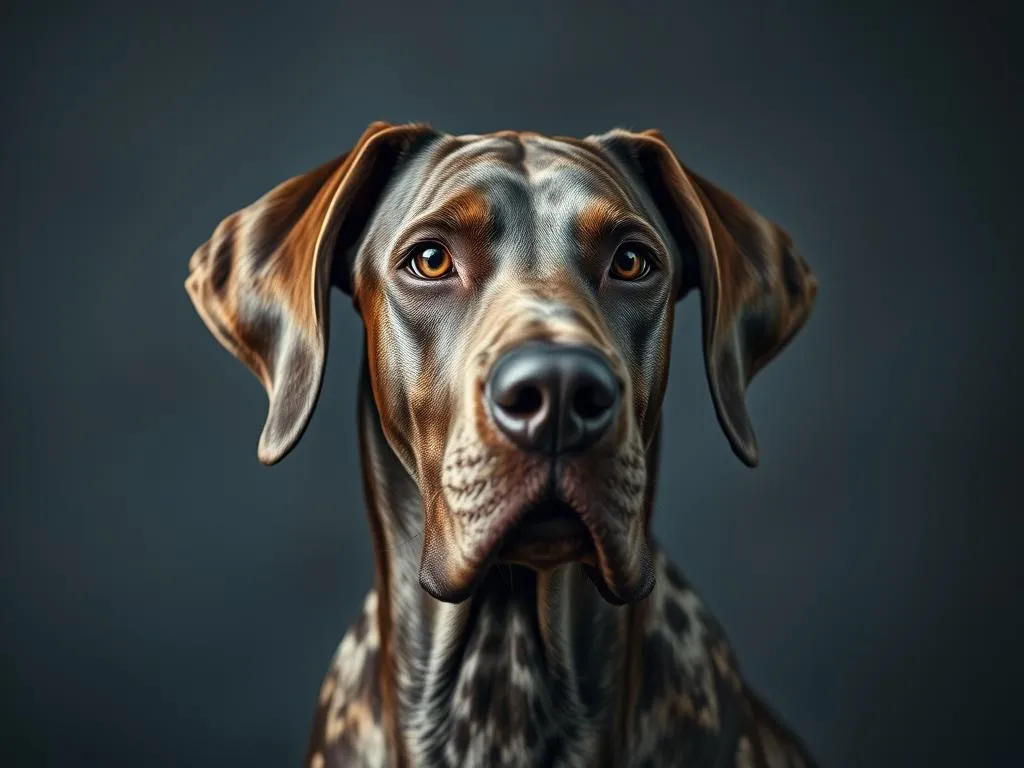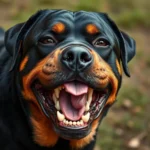
Introduction
The Great Dane is often hailed as one of the largest dog breeds in the world, but what many may not realize is that this gentle giant is also known for its speed. With their towering height and muscular build, Great Danes can reach impressive speeds, making them not just companions but also athletes in their own right.
Understanding a breed’s speed is crucial for potential owners and dog enthusiasts alike. Speed can influence a dog’s exercise needs, their ability to participate in activities, and even their overall health. In this article, we will delve into the Great Dane’s speed, exploring how fast they can run, what factors affect their speed, and how they compare to other dog breeds.
Understanding Dog Breeds
Definition of Dog Breeds
A dog breed is a specific strain of domestic dogs with distinct characteristics, including size, appearance, and behavior. The concept of dog breeds stems from selective breeding practices, where certain traits are enhanced to meet the needs of humans, whether for work, companionship, or sport. Understanding these characteristics is essential for anyone considering adding a dog to their family, as it can greatly impact training, care, and lifestyle.
Popularity of Different Dog Breeds
Dog breeds vary in popularity across different regions, influenced by lifestyle, climate, and cultural preferences. According to recent statistics, various breeds dominate the charts in different countries, with the Great Dane consistently ranking among the top choices for families seeking a gentle yet imposing pet. Their combination of size, loyalty, and affection makes them a favored breed in many households.
The Great Dane: An Overview
History of the Great Dane
The Great Dane has a rich history that dates back to ancient times. Originally bred in Germany for hunting large game, these dogs were valued for their strength and speed. Over the years, their purpose evolved, and they became known as noble companions, often associated with royalty. Their history is not just about size; it highlights a breed that has adapted to serve various roles throughout the ages.
Physical Characteristics
Great Danes are known for their impressive stature. Adult males typically stand between 30 to 34 inches tall at the shoulder, while females range from 28 to 32 inches. They can weigh anywhere from 100 to 175 pounds, depending on their build and diet. Their coats come in various colors, including fawn, brindle, blue, black, and harlequin, allowing for a range of striking appearances.
Temperament and Behavior
Despite their imposing size, Great Danes are known for their friendly and gentle temperament. They are often described as affectionate, loyal, and good-natured, making them excellent family pets. Their social nature means they typically get along well with children and other animals, provided they are properly socialized from a young age.
Speed of the Great Dane
Average Speed
When it comes to discussing how fast a Great Dane can run, they can reach speeds of up to 30 miles per hour in short bursts. This impressive speed is primarily due to their long legs and strong muscles, enabling them to cover ground quickly. However, their speed can vary based on several factors, including age, health, and fitness level.
Comparison with Other Breeds
To put the Great Dane’s speed into perspective, let’s compare it with both smaller and larger breeds.
-
Smaller Breeds: For example, a Greyhound can reach speeds of up to 45 miles per hour, making it one of the fastest dog breeds. In contrast, a Beagle typically runs at around 20 miles per hour. While Great Danes are not the fastest, their speed is quite remarkable for their size.
-
Larger Breeds: When compared to other large breeds like Mastiffs and Rottweilers, Great Danes tend to be faster. Mastiffs generally max out at around 15-20 miles per hour, while Rottweilers can reach speeds of about 25 miles per hour. Thus, the Great Dane holds a notable position among large breeds in terms of speed.
Impact of Age and Health on Speed
As with many breeds, a Great Dane’s speed can be affected by age and health. Young puppies are naturally more energetic, but as they grow, they may not reach their full speed until they are fully developed. Adult Great Danes generally maintain their speed until around 5 to 6 years of age, after which they may start to slow down due to natural aging processes or health issues such as hip dysplasia or arthritis.
Factors Affecting a Great Dane’s Speed
Physical Fitness
Like humans, dogs require regular exercise to maintain their fitness levels. For a Great Dane, regular physical activity is essential not only for speed but also for overall health. Activities such as jogging, playing fetch, or participating in agility training can help keep a Great Dane in excellent shape. Owners should aim for at least an hour of exercise each day to promote healthy muscle tone and cardiovascular fitness.
Nutrition
Proper nutrition plays a pivotal role in a Great Dane’s speed and overall well-being. They require a balanced diet rich in proteins, fats, carbohydrates, vitamins, and minerals to support their large bodies and energetic lifestyles. Weight management is crucial; excessive weight can hinder their speed and lead to health problems. Owners should consult with veterinarians to determine the best dietary plan for their furry companions.
Training and Socialization
Training is vital for enhancing the speed and agility of a Great Dane. Positive reinforcement techniques can help them learn commands that boost their performance in activities like agility or obedience. Socialization is equally important; exposing a Great Dane to various environments, people, and other animals can improve their confidence and behavior, making them more adaptable and responsive during physical activities.
The Great Dane in Action
Activities that Showcase Speed
Great Danes can participate in various activities that highlight their speed and agility. Dog sports such as lure coursing, agility trials, and obedience competitions are excellent ways to channel their energy and showcase their athletic abilities. Many Great Danes have excelled in these events, demonstrating that they can be both gentle giants and accomplished athletes.
Safety Considerations
While it’s essential to encourage physical activity, safety should always be a top priority when exercising a Great Dane. Owners should provide ample space for running and play, ensuring the environment is free from hazards. It’s also important to monitor for signs of overexertion, such as excessive panting, limping, or reluctance to continue. Providing water and rest breaks during exercise is crucial for keeping a Great Dane healthy and happy.
Conclusion
In summary, the Great Dane is not only a magnificent breed known for its size but also for its impressive speed capabilities. Understanding how fast a Great Dane can run and the factors that influence their speed is essential for potential owners. These gentle giants make wonderful pets for active families willing to commit to their exercise and care needs. Before bringing a Great Dane into your home, consider your lifestyle and ensure you can meet the physical and emotional needs of this remarkable breed.
FAQs
How Fast Can a Great Dane Run?
A Great Dane can run at speeds of up to 30 miles per hour in short bursts.
Do Great Danes Need a Lot of Exercise?
Yes, Great Danes require regular exercise—at least an hour each day—to maintain their health and speed.
How Does Age Affect a Great Dane’s Speed?
As Great Danes age, they may slow down due to natural aging processes or health issues, typically around the age of 5 to 6 years.
What Are Common Health Issues Affecting Great Danes?
Common health issues that may affect a Great Dane’s speed include hip dysplasia, arthritis, and heart problems.
Can Great Danes Participate in Dog Sports?
Yes, Great Danes can participate in various dog sports, including agility, obedience, and lure coursing, showcasing their speed and agility.
By understanding the speed and characteristics of the Great Dane, potential owners can make informed decisions about bringing this incredible breed into their lives.









